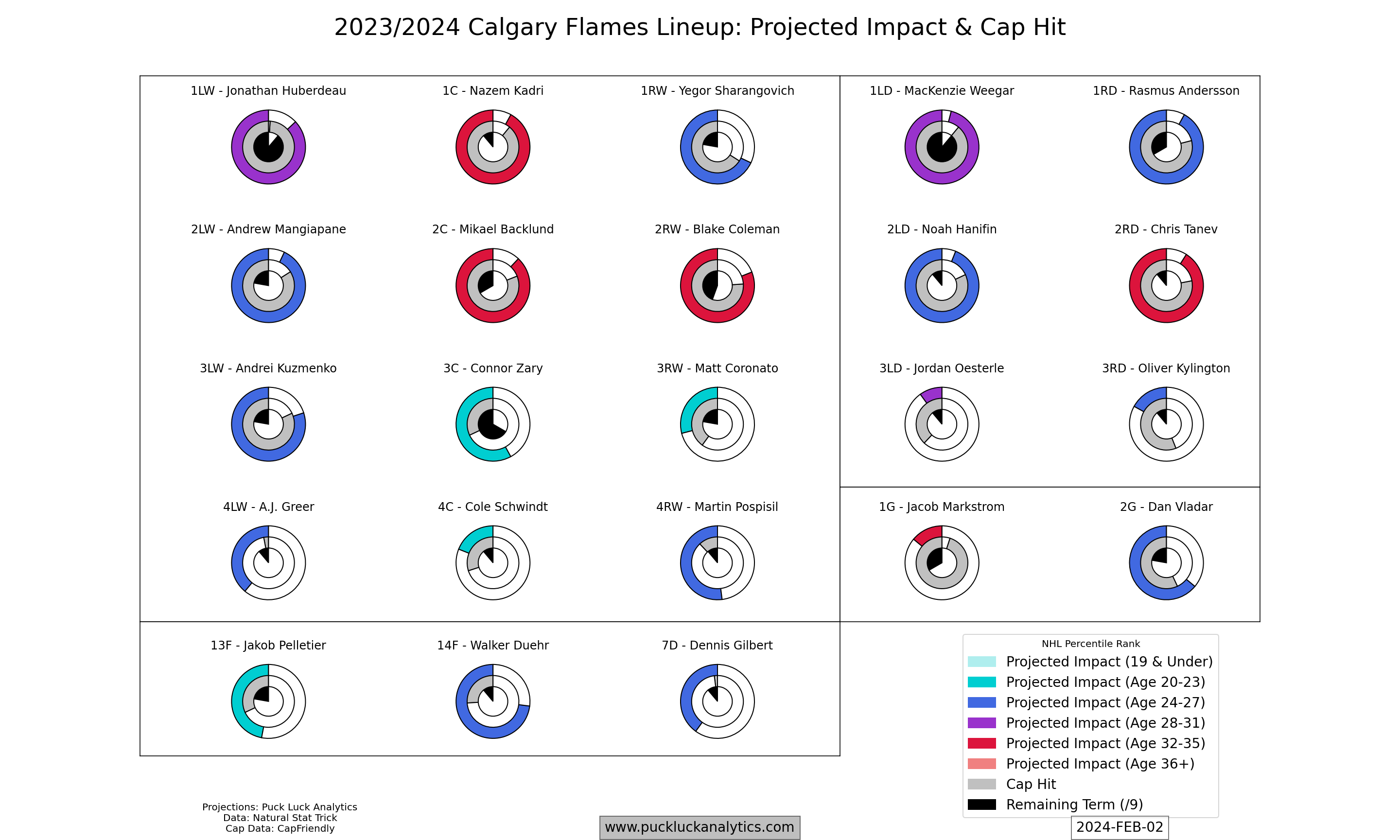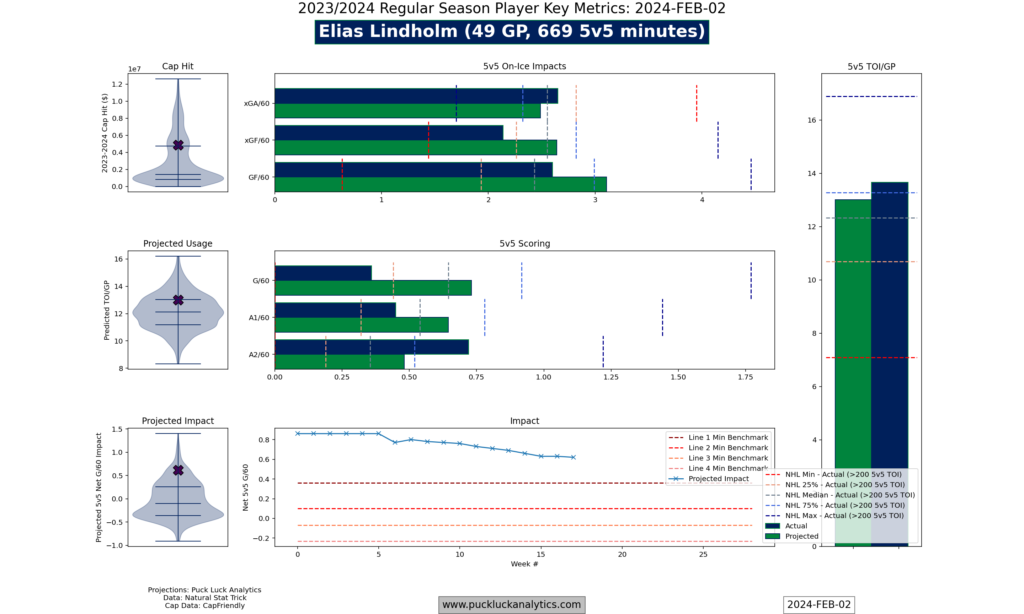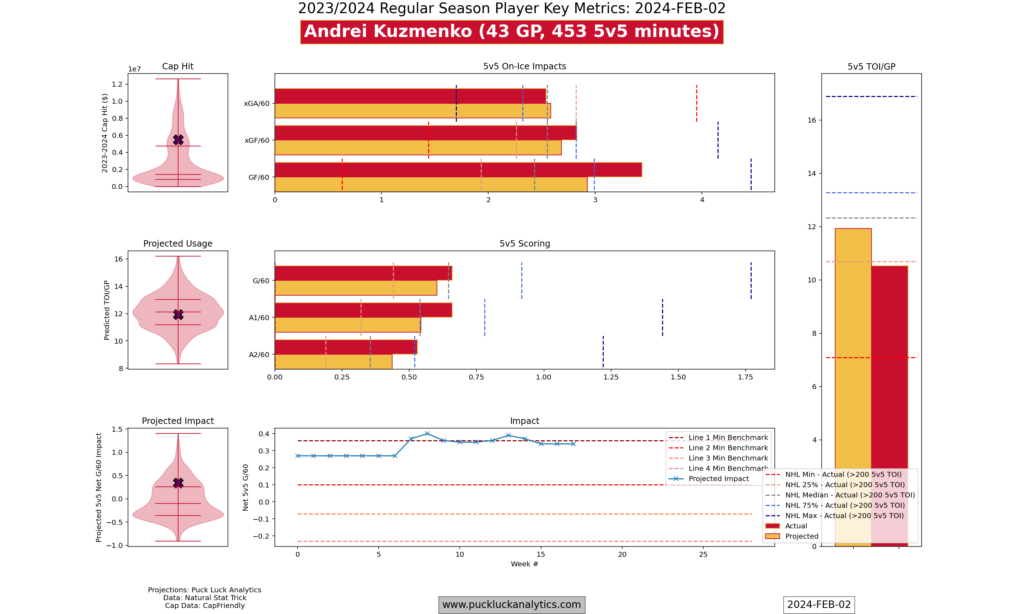The Vancouver Canucks and Calgary Flames kicked trade season into gear on Wednesday night with the deal that sent Elias Lindholm to Vancouver and Andrei Kuzmenko and a package of future assets to Calgary. There’s plenty to unpack in the deal.
As we look at the trade, a few notes on the approach. I’m going to avoid giving out trade grades. It’s one deal that should fit within a larger strategy for each team. There are ripple effects that permeate from this decision for both teams. Assigning a grade would assume we know the complete strategic thought process within each front office and very likely provide an incorrect bias.
Instead, we’ll look at it through a teambuilding lens that attempts to give some perspective on what each front office could do next. We can also look how different elements of the trade fit with some of the teambuilding strategies I’ve written about recently. If you missed those posts, you can find them here:
- Perpetual Mediocrity: ‘Just Get In’
- Designed to Fail: The Rebuild
- A Better Way: Regenerative Cohorts
The Trade
First off, let’s start with the facts. What did each team acquire?
Vancouver Canucks Acquire:
- Elias Lindholm
Calgary Flames Acquire:
- Andrei Kuzmenko
- Hunter Brzustewicz
- Joni Jurmo
- 2024 1st RD Pick (VAN)
- 2024 4th RD Pick (VAN) *Conditional
The Pieces
Before we get into analyzing the trade itself, we need a better understanding of the assets involved:
Elias Lindholm
Lindholm is a 29 year old center in the final year of his current contract, with a cap hit of $4.85MM. His production has dropped off significantly over the past season and a half, following the departure of linemates Johnny Gaudreau and Matthew Tkachuk. His projected impact still looks strong, although this season’s 5v5 on-ice expected goal share is a concern.
Andrei Kuzmenko
Kuzmenko is a 27 year old winger with another season remaining on his current deal, which carries a $5.5MM cap hit. He shot the lights out to start his NHL career but had fallen out of favor in Vancouver since Rick Tocchet came in as head coach late last season. His shooting percentage has leveled out but he has still been a solid contributor at the NHL level.
Prospects and Picks
Hunter Brzustewicz is a 19 year old right defenseman currently playing for the Kitchener Rangers of the OHL. He currently leads all OHL defensemen with 69 points, collected in 48 games played. I’ve seen plenty of comparisons to Adam Fox, so the upside potential seems significant, although it’s far from a sure thing at this stage.
Joni Jurmo is a 21 year old left defenseman currently playing in the SM-liiga, where he’s collected 3 points in 34 games.
The 2024 1st round pick will be Vancouver’s. With the Canucks leading the Pacific Division at this juncture, it’s likely to be a late first rounder.
The 2024 4th round pick is conditional. If Vancouver makes the conference finals, the pick will upgrade to a 2024 3rd round pick. If it remains a 4th round pick, Calgary will receive the better of the VAN and NJ 4th rounders that Canucks currently own.
The Outlook
Now that we have a basic understanding of the assets that changed hands, let’s take a look at how the deal affects each team’s outlook going forward.
Vancouver Canucks
The Canucks acquired the best player in the deal. By traditional hockey logic, that means they won the trade. I don’t think it’s that simple. In fact, I don’t like this deal for the Canucks.
While the Canucks currently lead the Pacific Division, they profile as an average team in the model. They’ve been cruising along with a very strong 5v5 PDO, with both finishing and goaltending contributing significantly to their success. There’s a break even 5v5 expected goal share underneath that, which makes me question how long they’ll be able to sustain their current performance.
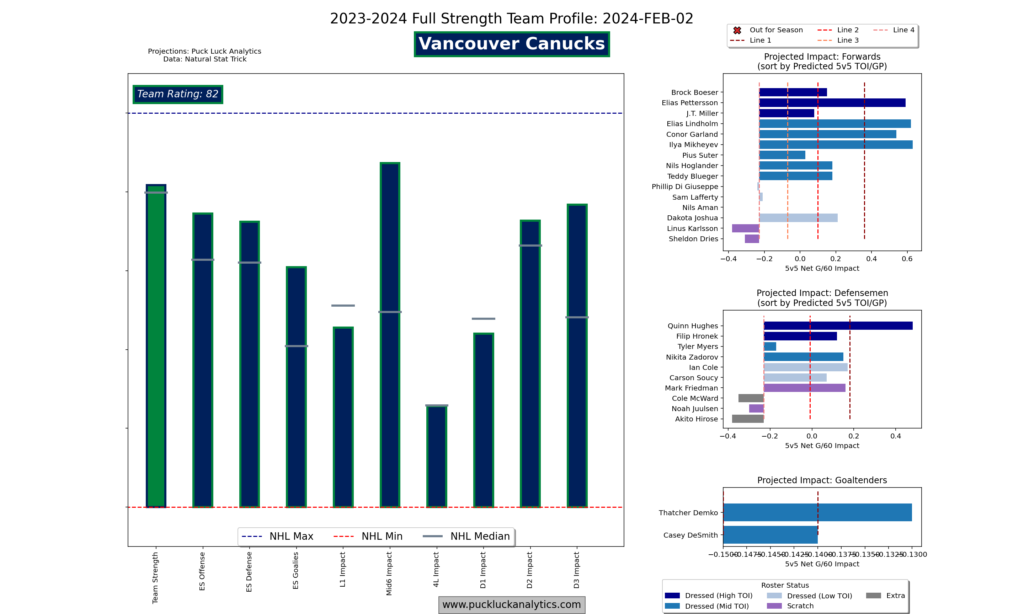
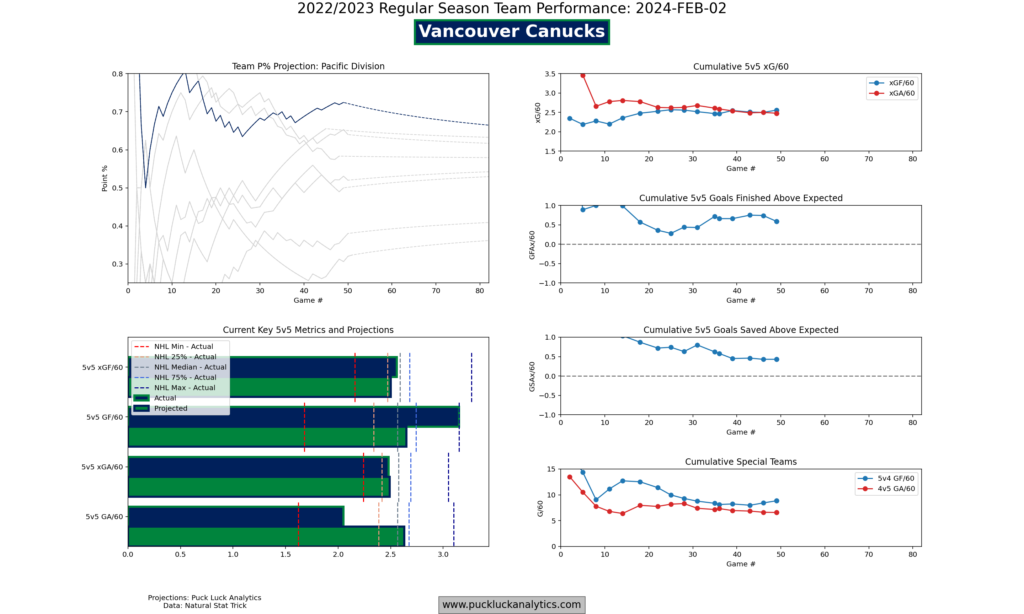
Having said that, things look a bit different if we consider their current position in the standings and look at the age of the Canucks roster. Using the age brackets I outlined in the Regenerative Cohorts strategy, the Canucks are almost entirely in Early Prime and Late Prime. There really isn’t much coming down the pipeline after this group. The regenerative potential of the current roster is very low and this group is about to age out. If there was ever a time to take a shot with this core group, it’s now.
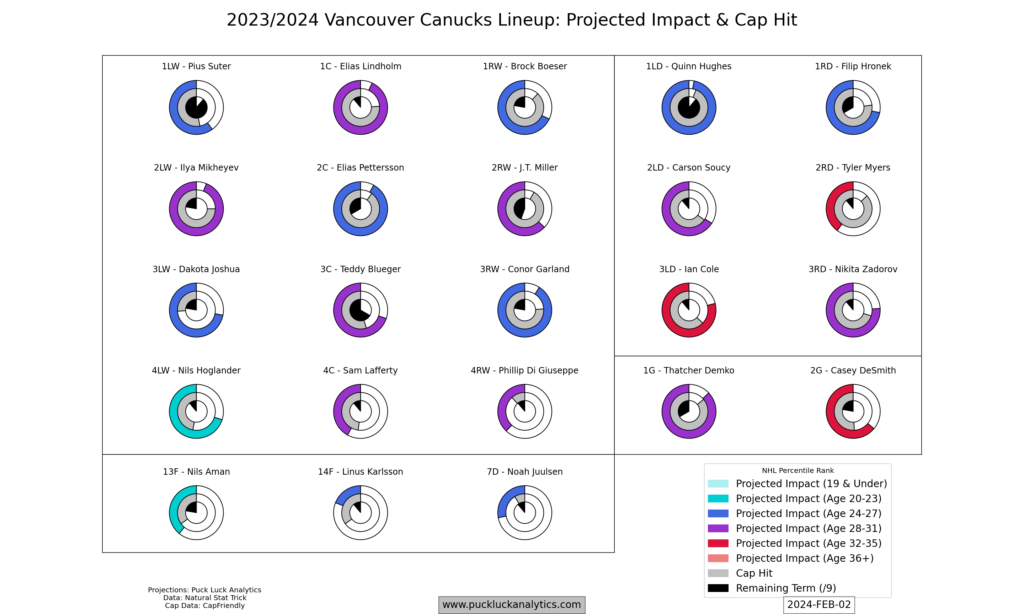
While it may be the right time to go for it with this group, I don’t like the move they made to do it or the long term implications that this deal comes with. First, adding a top six forward but removing another capable NHL forward makes the improvement to the Canucks team profile in the model negligible. It doesn’t add depth for the gauntlet that is the NHL playoffs and it doesn’t meaningfully improve their odds at winning it all this season.
The Canucks also paid a hefty price to acquire Lindholm. The shipped out one of their top prospects in Brzustewicz, from a prospect pool that is among the worst in the NHL. And they gave up a couple of picks, shifting their draft success probability profile further below baseline.
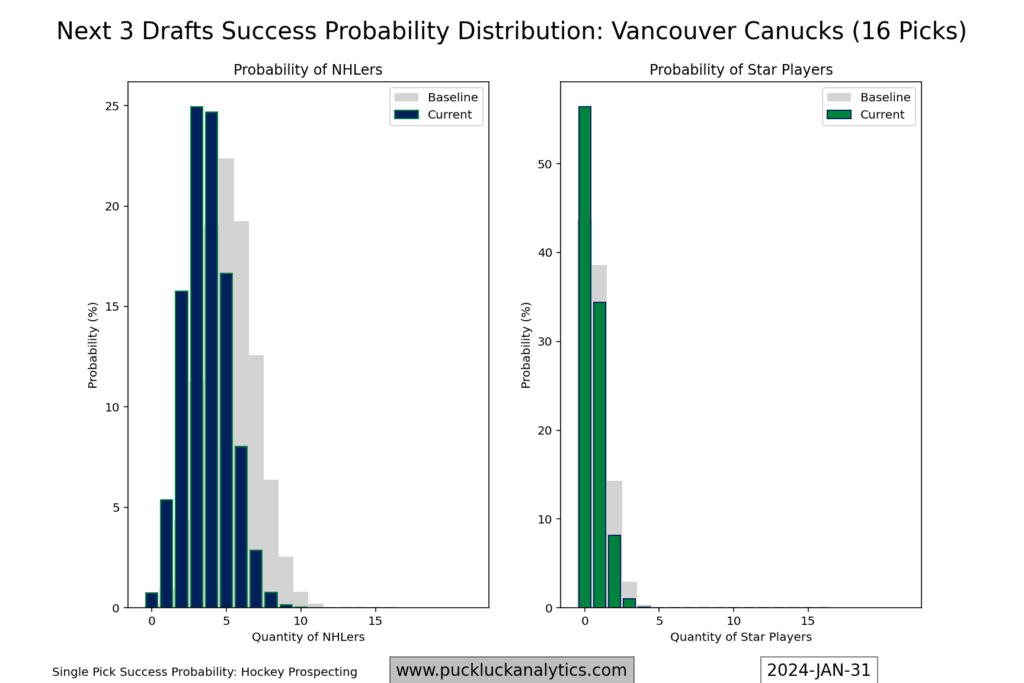

Finally, I’ve seen the suggestion that moving Kuzmenko freed up cap space for an Elias Pettersson extension that would kick in next season. That seems like a red herring. Sure, Lindholm is a pending UFA so they unlocked Kuzmenko’s $5.5MM hit for the 24/25 season. But the Canucks have only half their 24/25 cap space committed at this point. There’s enough room that the Canucks could conceivably extend both Pettersson and Lindholm. And the Lindholm extension potential looks dicey. We know it’s not uncommon for teams to extend deadline rentals and he still seems to be viewed as an elite player (at least by the Canucks based on this trade return). That’s despite two down seasons playing without elite linemates and he’s about to reach the downhill side of the age curve.
Calgary Flames
One of Craig Conroy’s stated goals when he took over as the Flames GM was to get younger. He also stated he intended to avoid another UFA debacle like the team experienced with Johnny Gaudreau. He made good on both those fronts in this deal. I like this deal from the Flames perspective. Exactly how much depends on what comes next.
The big win for the Flames was the future assets they acquired. The current roster is struggling and their prospect pipeline is not robust enough to see them improve. In the prospect pipeline, defense was an area of need for the Flames. Brzustewicz has some serious upside potential. He instantly becomes the top D prospect in the Flames organization according to the Hockey Prospecting model. The 1st round pick will be a late one, but there’s a good chance that it can produce an NHL player. Joni Jurmo and the 4th round pick are throw ins with remote odds of having NHL impact on their own. Yet draft picks and prospects are a numbers game and even the remote odds stack up. The Flames are left with a draft success profile that’s starting to lean favorably above baseline.

The Flames also got something in return for a pending unrestricted free agent, in a season where a playoff appearance looks like wishful thinking. That’s not something Flames fans will tell you they’ve seen much of in a long time. And in addition to the picks and prospects, they also took an NHL player back who had fallen out of favor in Vancouver. Kuzmenko can play at the NHL level. His inclusion in the deal helps the Flames keep their faint hope at a playoff run alive.
More important than helping with this season’s stretch drive though, is the potential for another move with Kuzmenko. The trade deadline is still a month away. The Flames could flip him for additional future assets this season. With another year on his deal, there’s also another opportunity next season.
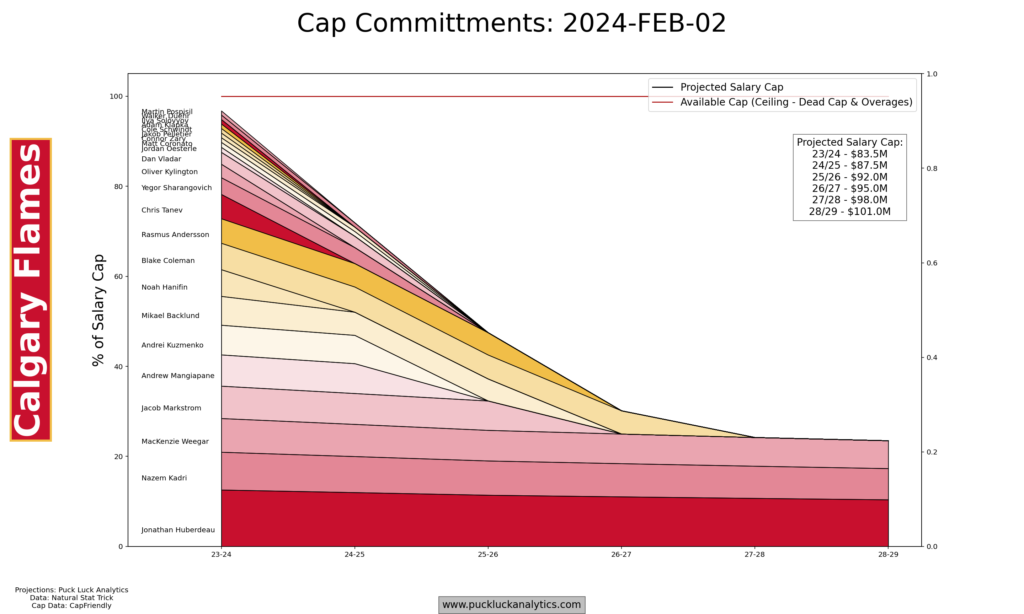
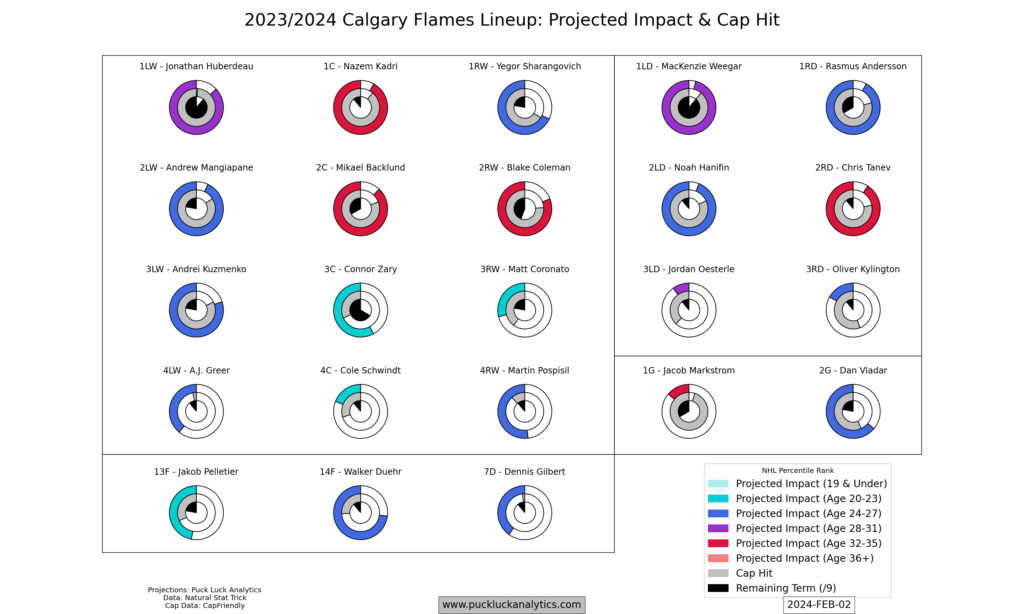
As a final note on the Flames side of the deal, let’s look at how it impacts the regenerative potential of the roster. The Flames current NHL roster is heavy on players in the Early Prime and Veteran age brackets. Lindholm is in Late Prime. He didn’t quite fit with the current cohort in Early Prime, which made him an ideal trade chip in the Regenerative Cohort strategy. In essence, trade him while his value remains high and get assets to bolster the next cohort(s) in the process. If we consider the current primary cohort is in Early Prime, we’d skip the Developing bracket and focus on building a cohort in the Future bracket. Brzustewicz and the draft picks fall in that bucket. It’s exactly what the the Flames did.
